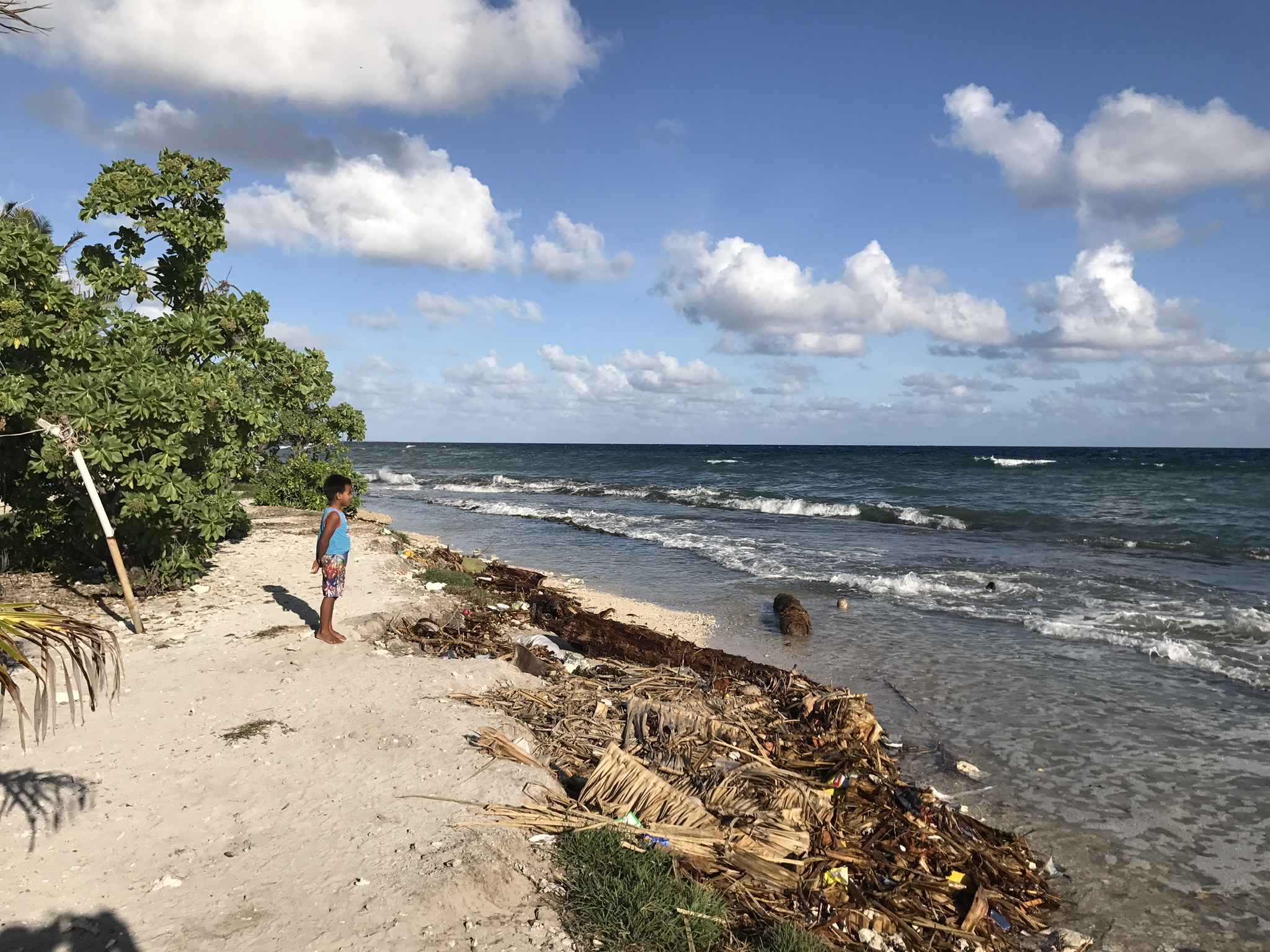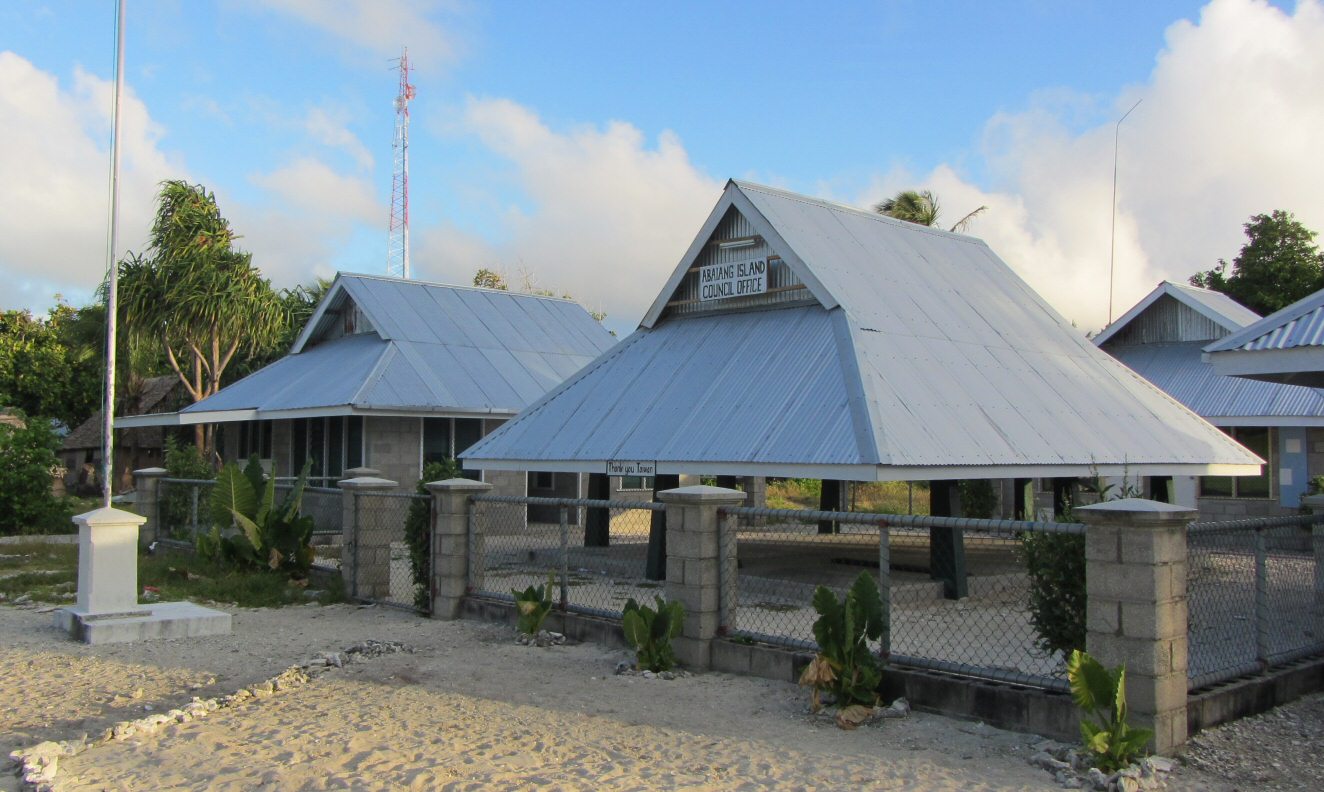|
Bikenibeu
Bikenibeu is a settlement in Kiribati. It is located close to the southeastern corner of the Tarawa atoll, part of the island country of Kiribati. It is part of a nearly continuous chain of settlements along the islands of South Tarawa, which are now linked by causeways. The low-lying atoll is vulnerable to sea level rise. Rapid population growth has caused some environmental problems. Kiribati's main government high school, King George V and Elaine Bernachi School, is located in Bikenibeu, as well as the Ministries of Environment and Education. Location Bikenibeu is one of the three main urban centres in South Tarawa, the others being Betio and Teaoraereke. Starting in 1963, causeways began to be built between the islands of the atoll to make communications easier. The causeways connected Bairiki to Bikenibeu by 1963, and extended from Bikenibeu to Bonriki by 1964, when flights began from the new airport to Fiji. Bikenibeu island lies between the Tarawa Lagoon to the n ... [...More Info...] [...Related Items...] OR: [Wikipedia] [Google] [Baidu] |
South Tarawa
South Tarawa ( gil, Tarawa Teinainano) is the capital and hub of the Republic of Kiribati and home to more than half of Kiribati's population. The South Tarawa population centre consists of all the small islets from Betio in the west to Bonriki and Tanaea in the north-east, connected by the South Tarawa main road, with a population of 63,439 . South Tarawa is home to most of the government, commercial and education facilities in Kiribati including the Port and the High Court at Betio, the State House, Government Ministries and foreign embassies and High Commissions in Bairiki, the University of the South Pacific campus in Teaoraereke, the House of Assembly in Ambo, the Kiribati Teacher College and King George V and Elaine Bernacchi School, the Government High School, is in Bikenibeu, and the Tungaru central hospital in Nawerewere. The Roman Catholic Diocese is based in Teaoraereke, the Kiribati Uniting Church in Antebuka, the National Spiritual Assembly of the Bahá’ ... [...More Info...] [...Related Items...] OR: [Wikipedia] [Google] [Baidu] |
Baháʼí Faith In Kiribati
The Baháʼí Faith in Kiribati begins after 1916 with a mention by ʻAbdu'l-Bahá, then head of the religion, that Baháʼís should take the religion to the Gilbert Islands which form part of modern Kiribati. The first Baháʼís pioneered to the island of Abaiang (aka Charlotte Island, of the Gilbert Islands), on March 4, 1954. They encountered serious opposition from some Catholics on the islands and were eventually deported and the first convert banished to his home island. However, in one year there was a community of more than 200 Baháʼís and a Baháʼí Local Spiritual Assembly. Three years later the island where the first convert was sent to was found to now have 10 Baháʼís. By 1963 there were 14 assemblies. As the Ellice Islands gained independence as Tuvalu and the Gilbert Islands and others formed Kiribati, the communities of Baháʼís also reformed into separate institutions of National Spiritual Assemblies in 1981. The Baháʼís had established a number of sc ... [...More Info...] [...Related Items...] OR: [Wikipedia] [Google] [Baidu] |
King George V And Elaine Bernachi School
King George V and Elaine Bernacchi School (KGV/EBS) is a government senior high school of Kiribati, located in Bikenibeu, South Tarawa. it has almost 600 students. In 1993 it had a competitive admissions process as there was not enough space for every high school student in Kiribati; the remainder had to enroll in Christian high schools.Talu, Alaima. "Towards Quality in Education" (Chapter 21, in Part IV: Social Issues). In: Van Trease, Howard (editor). ''Atoll Politics: The Republic of Kiribati''. University of Canterbury MacMillan Brown Centre for Pacific Studies and University of the South Pacific Institute of Pacific Studies, 1993. , 9780958330008. p242/ref> Since then the Kiribati government had established two additional government high schools. The school is next to the Ministry of Education head office. History It was formed by the 1965 merger of two schools: King George V School, a boys' secondary school that was founded in 1922 in Bairiki and later moved to Abemama,Talu, ... [...More Info...] [...Related Items...] OR: [Wikipedia] [Google] [Baidu] |
Kiribati
Kiribati (), officially the Republic of Kiribati ( gil, ibaberikiKiribati),Kiribati ''The World Factbook''. Europa (web portal). Retrieved 29 January 2016. is an island country in in the central . The permanent population is over 119,000 (2020), more than half of whom live on |
Education In Kiribati
Education in Kiribati is free and compulsory from age 6 to 14, which includes primary school through grade six, and Junior Secondary School for three additional grade levels."Kiribati" . ''2001 Findings on the Worst Forms of Child Labor''. , (2002). ''This article incorporates text from this source, which is in the ''. In 19 ... [...More Info...] [...Related Items...] OR: [Wikipedia] [Google] [Baidu] |
Cabinet Of Kiribati
The Cabinet of Kiribati is the cabinet (executive branch) of the government of the Republic of Kiribati. The initial text of the Constitution of Kiribati (art.40) specifies that the Cabinet "shall consist of the Beretitenti, the Kauoman-ni-Beretitenti and not more than 10 other Ministers, and the Attorney-General". Members of the Cabinet are appointed by the President, from among Members of Parliament (art.41). Since October 2016, a change of the Constitution text allows more than 10 ministries and retires the Attorney General from the Cabinet. All ministries but one are headquartered in South Tarawa, from Betio to Bikenibeu. The Ministry of Line and Phoenix Islands Development is situated in London, Kiribati on Kiritimati. Current Cabinet The current Cabinet consists of the following Ministers: The first nine ministers sworn in on 2 July 2020 at the State House in Bairiki (South Tarawa) and include Dr Teuea Toatu, Willie Tokataake, Ruateki Tekaiara, Ribanataake Awira ... [...More Info...] [...Related Items...] OR: [Wikipedia] [Google] [Baidu] |
Teaoraereke
Teaoraereke (in Gilbertese, the narrow surface) is a town and settlement in South Tarawa of Kiribati. It is part of a nearly continuous chain of settlements along the islands of South Tarawa, which are now linked by causeways, between Bairiki and Buota ( North Tarawa). Teaoraereke lies between Nanikai and Antebuka. 6,073 inhabitants live in Teaoraereke at the last census (2020), that means the third populated area in all Kiribati and the second of South Tarawa’s (TUC), but Bikenibeu. There are the Kiribati campus of University of South Pacific and the TUC main office. The Episcopal see of the Catholic Church in Kiribati The Catholic Church in Kiribati is part of the worldwide Catholic Church, which, inspired by the life, death and teachings of Jesus Christ, and under the spiritual leadership of the Pope and Roman curia in the Vatican City (in Rome) is the largest ... and the Diocese of Tarawa and Nauru, the Sacred Heart Cathedral are also in Teaoraereke. References E ... [...More Info...] [...Related Items...] OR: [Wikipedia] [Google] [Baidu] |
Abemama
Abemama (Apamama) is an atoll, one of the Gilberts group in Kiribati, and is located southeast of Tarawa and just north of the Equator. Abemama has an area of and a population of 3,299 . The islets surround a deep lagoon. The eastern part of the atoll of Abemama is linked together by causeways making automobile traffic possible between the different islets. The outlying islands of Abatiku and Biike are situated on the southwestern side of the atoll. The village of Kariatebike serves as the government center for the atoll which includes an administration building, the police station and a hospital. Abemama was formerly known as Roger Simpson Island, Dundas Island, Hopper Island, or Simpson Island. Geography Abemama has a land area of with a width varying from to . The island has 3 main islets; the largest and main islet has 11 villages and is home to most of the population. Abatiku, an islet located at the north-western reef, and Biike just south of it, have much small ... [...More Info...] [...Related Items...] OR: [Wikipedia] [Google] [Baidu] |
Ministry Of Education (Kiribati)
The Ministry of Education (MoE) is a government ministry of Kiribati, headquartered in Bikenibeu, Tarawa, next to the King George V and Elaine Bernacchi School. the ministry has about 1,400 employees. " Ministry of Education (Kiribati). Retrieved on 6 July 2018. Ministers * Roniti Teiwaki (1974–1978) for the Colony * Teatao Teannaki (1978–1979) for Education, Training and Culture * Ieremia Tata ...[...More Info...] [...Related Items...] OR: [Wikipedia] [Google] [Baidu] |
Abaiang
Abaiang, also known as Apaiang, Apia, and in the past, Charlotte Island, in the Northern Gilbert Islands, is a coral atoll of Kiribati, located in the west-central Pacific Ocean. Abaiang was the island of the first missionary to arrive in the Gilberts, Hiram Bingham II. Abaiang has a population of 5,872 (2020 census). Geography Abaiang Atoll is in the northern Gilberts, located not very far to the north of Tarawa. Abaiang is the fourth most northerly in the Gilberts chain of atolls, with a total land area of . The atoll has a lagoon that provides sheltered anchorage. The main island of Abaiang, ''Teiro'' (not to be confused with the small islet of ''Teirio'') has a total land area of extends from the northern village of Takarano to the southern village of Tabontebike. It occupies the complete eastern rim and also encircles the southern part of the atoll, stretching over a distance of some Its width ranges from no more than to more than , averaging . It contains 16 of the ... [...More Info...] [...Related Items...] OR: [Wikipedia] [Google] [Baidu] |
Baháʼí Faith
The Baháʼí Faith is a religion founded in the 19th century that teaches the essential worth of all religions and the unity of all people. Established by Baháʼu'lláh in the 19th century, it initially developed in Iran and parts of the Middle East, where it has faced ongoing persecution since its inception. The religion is estimated to have 5–8 million adherents, known as Baháʼís, spread throughout most of the world's countries and territories. The Baháʼí Faith has three central figures: the Báb (1819–1850), considered a herald who taught his followers that God would soon send a prophet similar to Jesus or Muhammad; the Báb was executed by Iranian authorities in 1850; Baháʼu'lláh (1817–1892), who claimed to be that prophet in 1863 and faced exile and imprisonment for most of his life; and his son, ʻAbdu'l-Bahá (1844–1921), who was released from confinement in 1908 and made teaching trips to Europe and the United States. After ʻAbdu'l-Bahá's death ... [...More Info...] [...Related Items...] OR: [Wikipedia] [Google] [Baidu] |
Tarawa Teachers' College
Tarawa is an atoll and the capital of the Republic of Kiribati,Kiribati ''''. . in the region of the central Pacific Ocean. It comprises North Tarawa, which has 6,629 inhabitants and much in common with other more remote islands of the [...More Info...] [...Related Items...] OR: [Wikipedia] [Google] [Baidu] |




